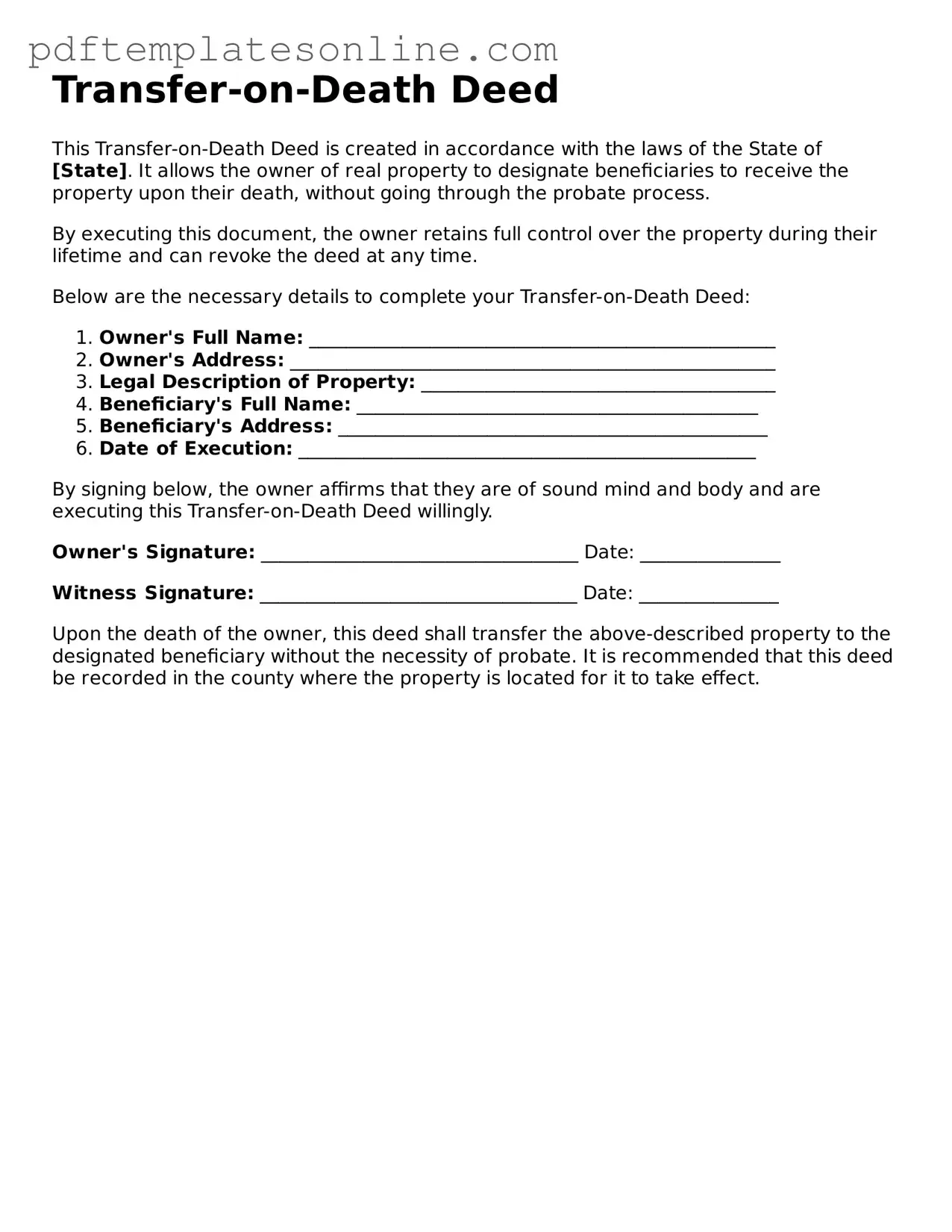Filling out a Transfer-on-Death Deed form can be a straightforward process, but mistakes can lead to complications down the line. One common error is failing to include a legal description of the property. Instead of simply listing the address, it’s crucial to provide a detailed description, such as the lot number and block number. This ensures that there is no ambiguity about which property is being transferred.
Another frequent mistake involves not signing the deed correctly. All required parties must sign the document in the appropriate places. If the deed is not signed properly, it may not be recognized as valid. Moreover, some individuals forget to have the deed notarized. Notarization is often a requirement for the deed to be legally enforceable. Without it, the transfer may face challenges in probate court.
People also sometimes overlook the need to update the deed after major life events. For example, if the property owner gets married, divorced, or passes away, the deed may need to be revised to reflect these changes. Failure to do so can lead to disputes among heirs or unintended beneficiaries.
Finally, misunderstanding the implications of the Transfer-on-Death Deed can cause issues. Some individuals assume that this deed avoids all probate processes, but that is not always the case. While it does allow for the direct transfer of property, any debts associated with the property must still be addressed. Being clear on these details can prevent future legal complications.
